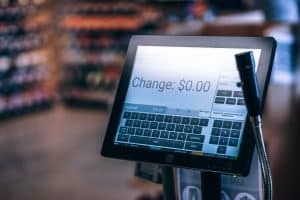The convenience of self-checkout has made the service increasingly popular among customers in recent years. Retailers also take advantage of the self-checkout technology to reduce labor costs and speed up the checkout process.
Unfortunately, this convenient option is popular among genuine customers and fraudsters alike.
The seemingly easy process presents many fraud-related vulnerabilities and can impact the bottom line of many retail businesses. Problems like sweethearting, tag-switching, and operational losses can be difficult to detect if retailers don’t adequately supervise the area with associates and technologies.
Through interviews with dozens of shoplifters with recent self-checkout theft experiences, I explored their shoplifting behaviors, methods, and the thought process behind why they chose to leverage this method to conduct theft. In addition, I investigated the impact of self-checkout associates and how their engagement with the customers would impact the shoplifting experience of offenders.
Why Self-Checkout Theft?
The main reason offenders leverage this theft option is because they felt self-checkout theft is easier to get away with, either through prior experiences or established rationales.
There are several contributing factors to why offenders believe self-checkout theft is easier to get away with. Almost all offenders I interviewed indicated they use self-checkout for shoplifting because they receive less attention from both employees and other customers.
Some offenders indicated that if they ever got caught, they could always say they’d accidentally or inadvertently took the items, been distracted during checkout, or misused the technology due to its complexity. Furthermore, several offenders are under the impression that self-checkout theft is harder to prosecute because it’s hard to prove the intent behind the taking of unpaid items. The psychology behind shoplifting using a machine is rather interesting; some offenders confessed that because they are interacting with a machine rather than a human being, psychologically, they felt less guilty about stealing.
During the interviews, I explored the reasons why some offenders target specific stores. Some feedback is rather sedentary and cannot be acted on, such as the omnipresence and proximity of the brand, size of the store, or the variety of products a retail chain carries. However, many offenders identified lack of employee oversight as the biggest opportunity retailers can act upon to reduce theft opportunities at self-checkouts. In addition, some offenders reported that outdate technologies and lack of consequences for shoplifting can precipitate more shoplifting incidents.
Role of Employees
When asked to identify loss prevention technologies in the self-checkout areas, many offenders interviewed recognized the associates as a deterrent before perceiving the surrounding technologies. Some offenders even reported that an attentive self-checkout associate is more effective at deterring theft than advanced technologies. Needless to say, self-checkout associates play a crucial role in deterring shoplifting.
One offender even commented on the importance of an attentive associate in deterring shoplifting: “A lot of stealing got by because of lazy employees—employees are not paying attention, or are on their phones. It’s all about the employees. If the store has employees who are more attentive, then self-checkout theft would be hard.”
As previously mentioned, a majority of the offenders admitted to intentionally using self-checkout services to avoid employee oversight. Therefore, increased associate supervision at self-checkout areas can help a store mitigate theft.
However, there is a fine balance between the level of engagement associates should provide and its effectiveness in deterring shoplifting. In general, there are two categories of thoughts from the offenders. On one hand, some offenders suggested that employee engagement and assistance during the checkout process would discourage from stealing.
Offender 2 said: “Employee engagement would deter me from stealing because that kind of lets me know that I’m being watched. Even if they just say, ‘Is there something I could help you with?’ or ‘Do you need any help today?’ It’s a lot easier to shoplift from a store when employees are not as engaging.”
On the other hand, some offenders suggested that self-checkout associates do not necessarily have to be engaging to deter shoplifters; rather, they just need to be aware of the overall checkout process. As a matter of fact, these offenders even indicated it might be helpful if the employee is simply overseeing the area, rather than engaging with customers, as some offenders intentionally wait for moments when employees are assisting other customers so that they may shoplift without the risk of drawing attention.
Offender 3 said: “You have an extra set of eyes on you, so you’re less likely to slide an item covered by another item.”
Regardless of level of engagement the self-checkout associates seek to provide, the main force of deterrence is attentive self-checkout associates who pay attention to customers and their surroundings. Moreover, employee training can be crucial in combating self-checkout theft. Educating associates on suspicious activities and red flags indicators and then engage with the would-be shoplifters could enhance the overall effectiveness of customer service at self-checkout.
The LPRC continue to help retailers shaping strategies to maximize convenience minimizing costs and losses through the SmartCheckout Centers of Excellence.
Check out the video below to see clips from actual offender interviewers.


